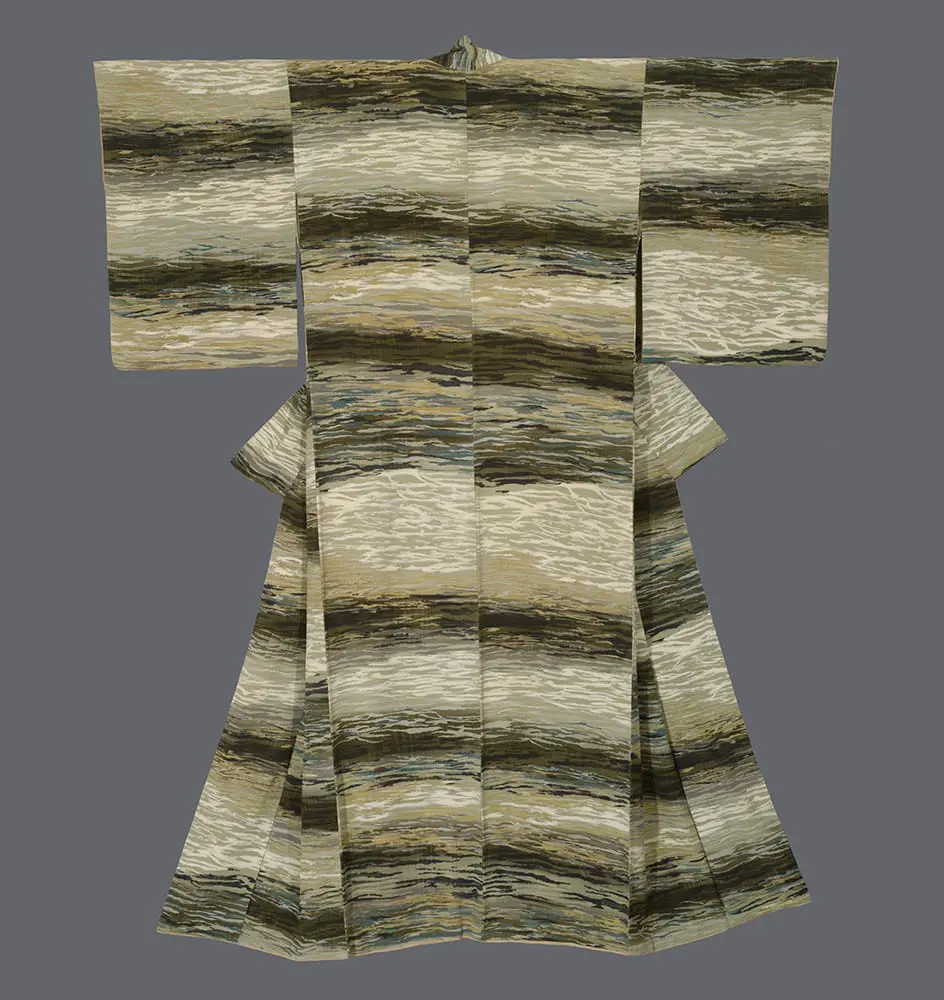This kimono represents a masterful synthesis of industrial textile production with artisanal refinement, showcasing the sophisticated manufacturing capabilities that emerged during Japan's economic prosperity period. The garment features an extraordinary interpretation of natural water patterns, created through silk-screening techniques enhanced with hand-painted details that blur the boundaries between mechanized and traditional craft production. The horizontal banding creates a rhythmic composition reminiscent of geological stratification or sedimentary layers, evoking both the flow of water and the passage of time through natural processes.
The color palette demonstrates remarkable subtlety, working within an earth-toned spectrum of ochres, sage greens, soft grays, and muted blues that suggests the weathered surfaces of ancient stones or the varied hues of shallow water over different substrates. This naturalistic approach reflects an interest in organic textures and environmental consciousness, while the silk-screening process allows for precise control over color gradations and pattern registration. The painted highlights visible in the detail images add dimensional depth and spontaneity that prevents the mechanically produced base from appearing too uniform or lifeless.
The overall effect evokes abstract expressionist painting, particularly the color field works of artists who explored natural phenomena through non-representational means. The horizontal flow of the pattern transforms the kimono into a kind of landscape painting, where the wearer becomes enveloped in an environment that suggests both water and earth, movement and stillness. This garment exemplifies the late 20th century Japanese textile industry's technical mastery and artistic ambition, creating luxury goods that combined cutting-edge production methods with sophisticated aesthetic sensibilities.
Its measurements span 48 inches (122 cm) from sleeve-end to sleeve-end and stand at 60 inches (152 cm) in height.
.avif)












